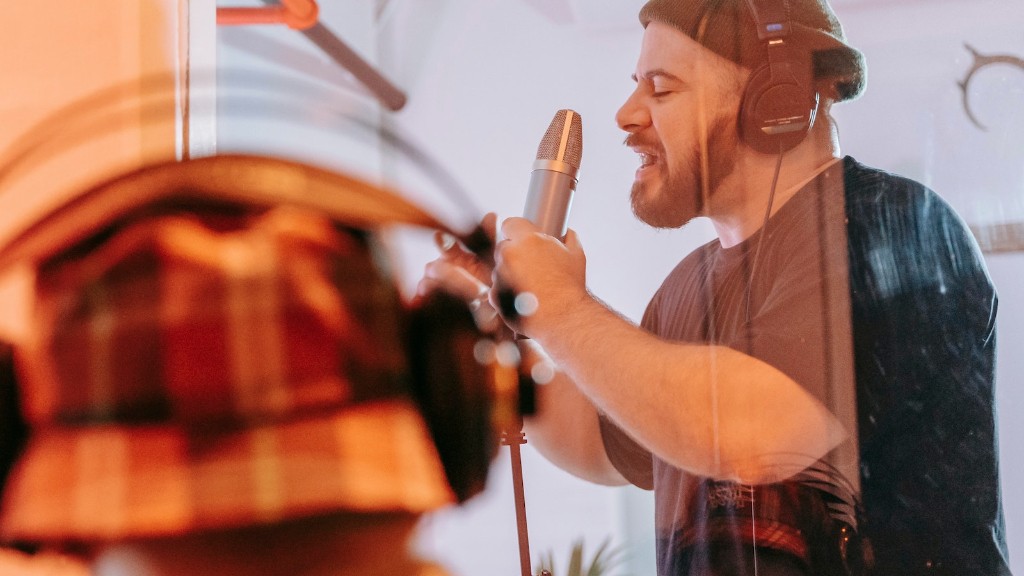There are many ways to sing from low to high, but one of the most common and effective ways is to use a “stepwise” approach. This means breaking the notes down into smaller steps, rather than trying to leap from the low note to the high note in one go. By doing this, you can gradually increase the power and range of your voice, until you can comfortably hit the higher notes. There are a few other things to bear in mind when singing from low to high: make sure you warm up your voice before you start, by doing some gentle exercises and singing some easy scales; take your time and don’t force your voice; and finally, breath deeply from your stomach to help project your sound. With a bit of practice, you’ll be hitting those high notes in no time!
There is no one definitive answer to this question. Depending on the style of singing you are aiming for, different techniques may be employed to help you sing from low to high. If you are looking to sing in a more classical style, you may wish to focus on developing your vocal technique and breath control. This will help you to sing with more power and finesse, allowing you to glide from low to high notes with ease. If you are looking to sing in a more pop or rock style, you may wish to focus on developing your vocal range. This will help you to sing with more power and emotion, giving you the ability to belt out those low notes before soaring up to the high notes. Whatever style you are aiming for, remember to warm up your voice before you start singing, and to practice regularly to help improve your range and power.
What is it called when you sing from low to high?
Vocal range is an important aspect of a singer’s voice. The range refers to the distance between the highest and lowest pitches that a singer is able to sing. A singer’s vocal range can be affected by many factors, such as the size and shape of the vocal cords, the amount of air pressure that is generated, and the resonance of the vocal tract.
There are many ways to expand your vocal range. Here are 10 of them:
1. Sing with a tall posture – This helps to open up your vocal cords and allows you to sing higher.
2. Breathe from the diaphragm – This helps you to control your breath and allows you to sing for longer periods of time.
3. Relax your jaw as you sing higher – This helps to prevent strain on your vocal cords and allows you to sing higher without pain.
4. Feel for any tongue tension – This can help you to identify any areas of tension in your vocal cords and helps you to relax them.
5. Try vocal sirens – This is a great way to warm up your vocal cords and helps to expand your range.
6. Sing lip trills – This helps to loosen up your vocal cords and allows you to sing higher.
7. do 15 Octave “ng” – This helps to open up your vocal cords and allows you to sing higher.
8. do 15 Octave “Gee” – This helps to open up your vocal cords and allows you to sing higher.
9. Use a head voice – This helps
Is it easier to sing low or high
There are many different techniques that singers use to achieve a proper balance of air pressure and muscle coordination within their bodies. However, they all generally agree that higher notes become easier and more reliable if the singer minimizes tension throughout the vocal instrument. To do this, we need to create a proper balance of air pressure and muscle coordination within the singer’s body.
If you’re struggling with singing flat, there are a few things you can do to improve your technique. First, make sure you’re singing with a more open mouth position. This will help you to project your voice more effectively. Second, use your core muscles to support your breath. This will help you to control your breath and produce a more powerful sound. Finally, roll off your vowels gently. This will help you to avoid sounding harsh or nasal. By following these tips, you’ll be able to stop singing flat and improve your overall vocal technique.
What is the rarest voice type?
A countertenor is a male singer who can sing as high as a soprano or mezzo-soprano. The countertenor is the rarest of all voice types. Countertenors are often used in choral music, where they can add a beautiful, ethereal quality to the sound. They can also be found in opera and other classical music genres.
Voice what does chest voice chest voice is the name that we give to that bottom part of a singer’s range where the voice feels the most natural and resonant. It’s the sound you produce when you speak in a normal conversational tone.
Can you force your voice to be higher?
If you want to raise the pitch of your voice, you need to try to speak with your head voice rather than speaking from your chest. Open your mouth a little more and use more air, and push your voice up into your head.
If you want to sing a higher note, you need to stretch your vocal cords out further. The longer the cords are stretched, the faster they’ll vibrate. This makes it possible to sing a higher note. The farther apart our vocal cords vibrate, the higher the note we can hit.
Can belting damage your voice
When belting, always be aware of your vocal health. If you belt incorrectly, you can easily damage your voice. Hoarseness, nodules, and even vocal hemorrhage can occur if you’re not careful. Always use proper technique when belting to protect your vocal health.
1. Bohemian Rhapsody by Queen: This is one of the most difficult karaoke songs to sing because of its wide range and fast tempo.
2. BYOB by System of a Down: This song is challenging to sing because of its unique vocal style and fast pace.
3. Body and Soul by John Green: This song is a classic, but its slower tempo and longer length make it difficult to sing.
4. Stone Cold by Demi Lovato: This song is one of the hardest to sing because of its high notes and fast tempo.
5. Without Me by Eminem: This song is difficult to sing because of its fast pace and aggressive lyrics.
6. Lovin’ You by Minnie Riperton: This song is a classic, but its slower tempo and higher notes make it difficult to sing.
7. Imagine by Ariana Grande: This song is difficult to sing because of its high notes and emotional lyrics.
8. Money by Pink Floyd: This song is difficult to sing because of its long length and slow tempo.
9. More items…
Can I train my voice to sing lower?
When training your voice to sing lower notes, it is important to focus on both power and precision. Look for vocal exercises that help you to project your voice without any strain or tension. With regular practice, you should be able to sing lower notes with ease and control.
As you age, your vocal cords slowly change and age. The fibers in your vocal cords become stiffer and thinner, and your larynx cartilage becomes harder. This limits the voice and is why elderly people’s voices can sound “wobbly” or “breathier”.
Why am I always flat when I sing
There are a number of reasons why a vocalist might sing off-key, but the most common reason is that the vocal cords are not producing the correct sound. This can be due to a number of factors, including incorrect breathing, incorrect vowel formation, or simply not enough practice. If you’re having trouble singing on key, make sure to check your vocal technique and make sure you’re forming your vowels correctly. Practice, practice, practice!
Vocal fatigue occurs when the muscles and tissues associated with vocal production are overused. This can happen in people who use their voice professionally, such as teachers, singers, and call center employees. Just as your legs can get tired from running, your vocal muscles can become fatigued from extended use. Symptoms of vocal fatigue include hoarseness, loss of vocal range, and a general feeling of fatigue or muscle weakness. If you think you may be experiencing vocal fatigue, it’s important to rest your voice and consult a speech-language pathologist to rule out other possible causes.
Can you change your vocal range?
If you want to improve your vocal range, the best thing to do is to keep practicing. There are a few things you can do to help increase your range, such as practicing vocal exercises and expanding your repertoire. But ultimately, the best way to improve your range is to keep singing. So keep at it, and pretty soon you’ll be hitting those high notes like a pro!
Ariana is a soprano, which means she can easily sing high notes. She has a beautiful voice and is very talented. I’ve seen her perform live and she is amazing. She is also very down to earth and humble, which I appreciate.
What voice type is Adele
Adele is a popular mezzo-soprano singer whose songs sit in a range that is comfortable for most listeners. She has a powerful chest voice that can reach high notes (E5, 10 notes above middle C), but she doesn’t go to the extremes of range that some singers do. This makes her music enjoyable for a wide range of people.
Beyoncé is an amazing singer with a powerful voice that is perfect for operatic songs. In this clip, she proves that she can sing opera just as well as any other type of music. Her voice is powerful and soulful, and she hits all the right notes. She is definitely a mezzo-soprano in disguise!
Warp Up
There is no one definitive answer to this question. Different vocal coaches and singing instructors may have different techniques for teaching their students how to sing from low to high. However, some basic tips on how to sing from low to high may include practicing scales and vocal exercises to warm up the voice, and gradually increasing the range of notes that you sing. As always, be sure to consult with a professional singing instructor before attempting any new techniques.
When singing from low to high, it is important to use proper technique in order to avoid damaging your vocal cords. Start by warming up your voice with some simple vocal exercises. Then, when you are ready to sing, take a deep breath and begin on a low note, using your abdominal muscles to support your voice. Slowly work your way up to the highest note you can comfortably sing. Remember to breathe properly and to use your diaphragm to support your voice. With practice, you will be able to sing from low to high without any problems.


